Diversity and inclusion: what do students think?
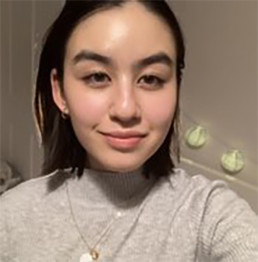
Written by Lulu Frisson
Lulu Frisson is a 15-year-old secondary school student from Birmingham.
“But who benefits from all this stuff on inclusion and diversity at school? Do students actually care?”
My dad leans over the table, eyes bright, his questions hanging in the air between us. Both of my parents are teachers and occasionally conversations like these – about anti-discrimination work within education – will crop up at the family dinner table. Truthfully, I find it fascinating. I tick a lot of diversity boxes myself as a biracial, bisexual, autistic teen girl. I often think about my identity and how schools can be more accepting of students from minority groups, but conversations with my parents about diversity in education make me realise that there’s still a long way to go when it comes to creating inclusive learning environments.
I often think of the awful murder of George Floyd in the summer of 2020 and the subsequent international Black Lives Matter protests as the sort of ‘explosive’ point for anti-discrimination work in schools and workplaces. In my mum’s primary school, the sudden heightened awareness around race within white spaces began igniting conversations around the lack of diversity in children’s books. In my own school, students began demanding change – to the curriculum, to the teaching staff, to the extracurricular clubs on offer – and we were largely listened to, encouraged to recognise and speak out against injustice. To answer my dad’s question – students undoubtedly cared about improving diversity and inclusion. And we absolutely do still care.
And yet the contrast between pupils’ anger about social injustice in summer 2020 and our current vocal demand for change is stark, and it’s something that needs to be addressed if schools wish to continue making meaningful progress with diversity and inclusion. Our reaction to the horrifying events of that summer was loud, passionate and angry because being loud, passionate and angry is often the quickest way to drive change. Now, having seen some positive changes implemented in my own school – the creation of an annual Culture Week, for example, and the increased awareness around the texts we study – I think a lot of us have stopped talking about diversity and inclusion simply because we’ve come to believe that those changes may be the most our school is able or willing to make.
But schools can’t let the conversation die down. Students who are part of minority groups still experience discrimination regularly – so much so that I believe we’ve become somewhat de-sensitised to it. I’ve noticed that my classmates from minority groups often brush off or downplay personal incidences of discrimination, and it’s something I find myself doing too. If a teacher jokes about how ‘exotic’ I am, my immediate reaction is usually to laugh it off. If a classmate makes an ignorant comment about autism, or someone tells me that bisexuality does not exist, I tend to excuse them through a hopeful lens of forgiveness.
What this really shows it that there’s still a certain expectation for LGBTQ pupils and students of colour to extend endless grace and compassion to classmates or even teachers who offend us; from as young as primary school, we’re often told to ‘be the bigger person’ when it comes to conflict, or to stay quiet and not cause a fuss. As a result, a lot of comments we hear that would absolutely be considered discriminatory get unreported in schools, brushed off as insignificant or normalised – with inevitably damaging impacts on student mental health.
That’s why diversity and inclusion work within school is so important. I remember listening to an assembly about microaggressions and realising that it was okay to feel hurt and uncomfortable by comments a lot of us students have come to excuse as banter, curiosity or ignorance. The simple acknowledgement that discrimination exists in forms other than outright abuse was so impactful, and I left that assembly feeling like my identity, and the struggles I’ve faced surrounding it, are valid. My parents sometimes talk about how it is ultimately up to policy makers to improve our schools and the culture created in them. And whilst longer term national change towards promoting equality in education is incredibly important, I’d argue that smaller immediate actions towards inclusivity can be just as meaningful.
For students who use different pronouns, for example, inclusivity might mean having teachers who respect and actively try to use gender neutral language in their classrooms. For me personally as an autistic student, inclusivity has meant being able to access things like fidget toys and a time out card, and receiving pastoral support in school. More broadly as an LGBTQ biracial person, I’ve felt most included and safe in lessons that include perspectives and examples of people from all backgrounds. If a teacher uses a case study of a same sex couple in biology class, for example, I’ll know that they’re accepting of LGBTQ people, and by extension accepting of me. It may sound trivial, but it often really is small actions that make the biggest difference.
So yes, students do care about diversity and inclusion. We notice the changes being made – or lack thereof – to our schools more than we might let on. Many students from minority groups naturally care deeply about continuing and improving our work on inclusivity, but the truth is that everybody, staff and students alike, need to too. To have the ability to not care about inclusion is undeniably a privilege. To be able to think about diversity solely at times that suit you, to be aware of inequality only when it is pointed out, to be oblivious to the fact that you are amongst the majority in the spaces you occupy – these are privileges that people from marginalised communities are persistently denied.
So it is not enough for allies to say they do not see colour, do not care about sexuality or do not think about gender. And, to extend on that, it is not enough for schools to hear minority students’ struggles or uplift our voices only at times that are convenient. Regardless of whether it’s Black History Month, Pride Month or a time like the summer of 2020, schools need to continue to actively listen to students from marginalised communities and be receptive to our suggestions – not only to create more diverse learning environments, but safer ones, too. We do not have the ability to leave aspects of our identity behind when we come to school, and we shouldn’t have to, either.
Accessing the voices of students with SENDs: barriers faced by a PhD researcher
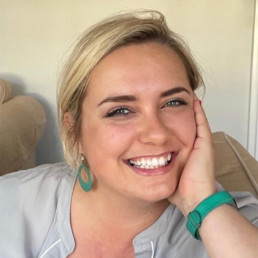
Written by Klaudia Matasovska
Former SEND teacher. She worked for 16 years in London, specifically in the areas of autism and sight impairment. She is currently working as a researcher at Goldsmiths, University of London.
I am really enjoying my PhD journey and I wanted to share some of my key experiences here. In particular, I wanted to talk about the issue of access to students with Special Educational Needs and Disabilities (SEND) which I encountered during my recent data collection. My PhD research interests centre around LGBT inclusion with pupils with SEND. For those who have an interest in intersectional research regarding inclusion and equality in education, this blog might be of use.
Based on my previous practice as a former SEN teacher, the barriers to disabled students’ voices being heard are often there because of the attitudes of others. Sometimes the barriers are (openly) presented via the attitudes of those who are supposed to be on their side. I once had an ex-colleague, a senior leader in one of the schools I worked at, confiding in me that she did not regard disabled students’ right to information about LGBT as ‘important’ because she expected them to have no romantic lives due to their disabilities. Other barriers can be presented via fear rather than stigma. Research shows that there does appear to be a deep-rooted fear amongst educators that talking about non-heterosexual intimacy and relationships with students with SEND is somehow risky.
Research involving the actual voices of students with SEND is limited and I wonder if this is partially due to restrictions imposed on researchers by students’ gatekeepers. This has been my experience, too. Earlier this year, I organised a series of research trips for the Year 1 evaluation of the ‘Equally Safe’ anti-bullying project of the EqualiTeach charity. I worked with a sample of eight mainstream primary and secondary schools including faith and church schools across a range of areas. During my interviews with staff and focus groups with students, I asked about aspects of the Equally Safe programme, such as creating inclusive policies and tackling identity-based bullying using a whole-school approach. I was viewing this research project via an intersectional lens and therefore, the evaluation was also seeking to elicit discussions about the LGBT and SEND intersections amongst other things. The gatekeepers, members of the leadership teams, were asked to select focus group student participants representing a wider selection of the protected characteristics of the Equality Act (2010) and involve student participants who traditionally might not have a voice, such as students with SENDs. Unfortunately, as it turned out – there were no focus group participants present who had any recorded SEND.
I understood that this type of research project can feature sensitive information and there is a need to protect any vulnerable students, ethically speaking. Despite this, the gatekeepers’ efforts to deny those from the under-represented groups an opportunity to have a voice in a research project on identity-based bullying was surprising. In sharp contrast, the focus groups included other types of under-represented pupils. For example, they often (but not always) featured pupils who had come out as LGBT. This is an interesting phenomenon given the fact that the controversial Section 28 of the Local Government Act (1988) is still impacting school culture in England. This is evident in misconceptions about what is suitable and ‘appropriate’ to teach which some educators can still struggle with. Often when I interview teachers about LGBT RSE topics or the SEND/LGBT intersection regarding their school policies and inclusive practice, I notice a hint of anxiety in their responses. They tend to stress that they follow the Equality Act (2010) and often mention having a considerable number of students with SEND. My experience with having no access to this category of students in these schools makes me question the cause behind this. Is this all happening because these schools just do not see these intersections? If that is the case indeed – why don’t they see them? Could the cause of this phenomenon be partially the result of the influence of Section 28? Do educators find dealing with certain types of intersections difficult and uncomfortable despite the law?
I will carry these questions into the second year of my PhD studies. It will be interesting to see if these issues with having access to students with SENDs will still be evident in the next sample of schools I am planning to visit. I would be interested to hear about your academic experiences in this area and any barriers you may have experienced in collecting data involving those who represent the ‘less heard’ category of students. Please, do not hesitate to get in touch with me.
Hidden Histories: Black in Psychology
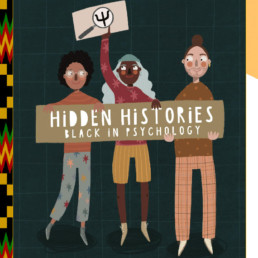
Written by Sinmi Ekundayo and Parise Carmichael-Murphy
Sinmi is a Year 9 student with an avid interest in politics and humanities subjects.
Parise is a PhD Education student who is passionate about decolonising the curriculum and widening access to the psychological professions.
Hidden Histories: Black in Psychology celebrates the contributions of Black people to the field of psychology and its allied professions. It is an open resource for people of all ages who are interested in psychology’s past, present and future. The booklet encourages young people to develop critical thinking skills by exploring ideas of anti-racist psychology, social change and activism, race and racism across psychological practice, and racial disparities in mental health. It also introduces readers to the requirements and steps needed to pursue a career in psychology and highlights how a range of skills, qualifications, and experiences can inform and shape our interests and expertise in psychology.
Parise Carmichael-Murphy and Adam Danquah are co-authors of Hidden Histories: Black in Psychology; they developed the resource in the hope that it has the potential to inspire future generations of anti-racist psychologists. Sinmi Ekundayo is listed in the ‘Acknowledgements’ of Hidden Histories: Black in Psychology as one of many contributors who helped to support and develop the book.
Sinmi was invited to review Hidden Histories: Black in Psychology by her teacher Laura Morris. Sinmi took a printed copy of the booklet home and reviewed it over a few weeks. Sinmi provided some really insightful feedback that highlighted areas of interest and some spaces for improvement. Sinmi’s comments highlighted some of the terminology used that could be better explained and in response, we added the term ‘cultural competence’ to the glossary.
Next, Parise invited Sinmi to collaborate on a blog post to highlight Hidden Histories: Black in Psychology. Some of the feedback and comments from Sinmi’s review have been expanded on in this blog:
“The fact that African Psychology is such a new concept that I have never even heard of it is astounding. It seems so simple when you think critically, obviously the culture you grow up in will affect the way your psyche functions and will not align with a completely different culture’s way of interpreting the human mind. It’s fascinating! I love this booklet so much.
I’ve always felt a bit of alienation from psychology as it always felt like a very white field to go into and now I understand why. Honestly, if the goal of Hidden Histories: Black in Psychology is to get more Black students into psychology it will succeed. Hidden Histories: Black in Psychology introduces psychologists that are telling our stories and interpreting them in a way that feels personal.
The poem at the end by J.Chambers is beautifully written. I love the ‘Useful Links’ section at the end where they list all the organisations that were made for Black education by Black people, it makes me feel so hopeful, especially since I have first-hand experience with some of them. It’s good to know someone is looking out for us. A lot of the time I was stopping to look further into new ideas and people I was being introduced to.
I sincerely believe that keeping Hidden Histories: Black in Psychology out of the curriculum is a disservice to ourselves. It would help Black students feel a stronger connection to themselves and psychology and I believe it would endow non-Black students with a sense of cultural empathy. The exemplary Black psychologists introduced in the booklet would intrigue anyone, but especially young Black students (such as myself) who will finally see themselves reflected in a field that feels very exclusive to rich white men.
This booklet is tremendously helpful in increasing Black students’ confidence in their ability to succeed in psychology in a way that isn’t too distant or convoluted. I’d recommend this to everyone, regardless of race. It’s genuinely an interesting insight into psychology that anyone would be interested in.”
To read, download and share the Hidden Histories: Black in Psychology resource, please use the following link: https://gmhigher.ac.uk/resources/hidden-histories-black-in-psychology/
We thank Laura Morris, our teacher and friend, for supporting us both to connect and collaborate on this blog post. Laura is Head of Religious Studies and Citizenship at Cedar Mount Academy and has a whole-school responsibility for anti-discrimination.
SEND Perspective: Why is it important to introduce intersectionality conversations in UK schools? Exploring seven top tips to address it.
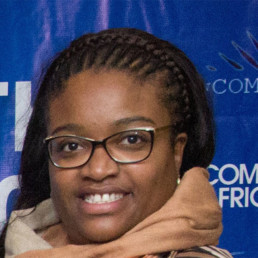
Written by Dilma de Araujo PhD (c)
SEND specialist. She has more than ten years of experience in education working in different educational institutions in the private and public sectors from early years to higher education levels, addressing special education needs; education policy research; gender inclusion and diversity.
‘A year nine boy of Black Caribbean heritage, claiming free school meals and with special education needs to represent a ‘typical’ student likely to be excluded from school.’
(Hawkins, 2019 p.14)
The Special Education Needs field involves a broad spectrum, where intersectional topics and issues such as gender, race and socioeconomic status are susceptible to emerge and often become a matter of great concern if the appropriate support and awareness initiatives are not in place. Hence, reflecting in the above statement by Hawkins (2019), it suggests that there are some significant points concerning financial, social and academic disadvantage and vulnerability indicators that should be addressed differently in our schools and educational institutions, raising awareness and incorporating a culture of dialogue, involving parents, carers and local communities actively in dynamic and creative activities in which different participants and agencies work in constructive partnership and collaboration (e.g. mental health and wellbeing practitioners; Local Authorities representatives, teachers, special education needs coordinators, local and national community activists and artists) aiming to improve not only black students, but all the multicultural and non-multicultural spectrum of school.
Thus, the role of schools, teachers and educational leaders can represent a crucial transformational factor. Hence, schools are designed to be a place where inclusion patterns and strong affinity bows of compassion, understanding and unity are consistently nurtured by adults, children and local communities. Aiming to generate diversity and equal dimensions within our multicultural society. To provide a healthy, safe and inclusive teaching and learning environments. Thus, school leadership teams have the responsibility to explore and address the following issues:
- Bias in the assessment process indicating over, under, misidentification and diagnosis;
- Rational parental response to historical discriminatory bias in the identification;
- Assessing migration’s resulting in different family health and cognitive endowments;
- Differential parenting behaviours and home learning environments;
- Differential experiences of deprivation between ethnic groups (Haye, 2021).
School senior leadership teams’ responsibility towards the implementation of an inclusive and diverse curriculum, programmes, initiatives and cultural activities in order to improve the multicultural perspective in their schools, taking into consideration students mental, cognitive, physical, emotional conditions, needs and circumstances raising the bars towards a positive learning performance and outcomes. In this line of thought, seven essential foundational strategies focus on the improvement of a culture of dialogue and reflective approaches concerning language, thoughts and actions, aiming to clarify different points of view and perspectives related to race, social, cultural inclusion.
Tip 1: Nurturing a culture of dialogue
Promoting dialogues involving racial matters in school can reduce bias, prejudice and pejorative attitudes. Thus, it is important reshape the teaching and learning approaches and behaviours may improve mutual respect, compassion, self and multicultural knowledge. E.g. cooperation involving students, teachers and other school staff. They can organize special pod-cast, webinars and school radio where life testimonials and experiences could address topics related to racial discrimination, macroaggressions and microaggressions.
Tip 2: Promoting reflection in and on action
Applying reflective practices to enhance teaching and learning is crucial to obtain valuable and effective results. Reflecting in-action provides the opportunity to explore and evaluate the academic practice and activities while the learning is taking place, opening the horizons not only for behaviour alignments and changings but also delivering and feedback strategies. Thus, promoting reflection-on-action practices is essential to improve the educational experience and activities built after interaction between teachers and students, mitigating biased attitudes and thoughts during teaching and assessment practices.
Tip 3: Preparing for and welcoming different perspectives
For many children and young people, teachers and school endeavours are the primary sources of information and knowledge. Hence, education institutions should be ready to face and address complex ways of think, behaviour and acting. To introduce potentially challenging conversations about race is essential to give quality training to teachers and staff, organizing regular meetings with parents and local communities and invest in multicultural representation in senior leadership posts in the educational organization.
Tip 4: Identifying students’ mental & emotional, cultural and traumatic journeys
The mental, emotional, cultural and traumatic journeys can impact and determine how children and young people absorb information and knowledge. Therefore, continuous evaluation, assessing, screening and reviewing students is vital to support teachers and students. Teaching practices can improve effectively when students’ needs are identified and properly monitoring based on child-centred approach, diverse curriculum, strong values and beliefs. Consequently, a positive impact can be generated in students’ performance, experiences and outcomes.
Tip 5: Encouraging the use of inclusive and diverse materials, resources and activities
The art of generating a culture of promoting human and racial rights, educational acceptance between adults and children, and constructing positive and dominant social and educational role models becomes the lynchpin of approaching complex topics. As a result, curricula, educational materials, schools’ displays and decorations, learning and leisure activities can be practical tools to combat the nature of privilege, supremacy and oppressive attitudes.
Tip 6: Exploring affective and embodied dynamic of learning
Starting from years early to higher education, recognizing and embracing the critical pedagogy in the daily schooling environment impacting teaching and learning practices through literature and other forms of creative arts aiming to explore and obtain the best of students’ ideas, beliefs, thoughts and aspirations. Learning dynamics could pass through a moment in which creative reflections are based on realistic expectations about a sense of identity, belonging, and existence, thus they could be co-related with all topics, disciplines and courses.
Tip 7: Creating a safe community learning environment
Local communities are an extension of the classroom and learning environment. It is crucial to the communication, interaction and mutual respect between school staff, local organizations and communities. Solid connections can be established through parents, governors and charities. It can help exchange experience, knowledge and update policies and general information.
In this context, addressing race paradigms and curriculum decolonization in the special education needs field can potentially represent a way to liberate bias, discrimination, preconceived thoughts, pejorative language. Additionally, all the changes and adjustments should be raised with the desire to generate productive and constructive empowerment by implementing effective anti-discrimination, SEND race and multicultural policies (also addressing migrants and refugee students). Thus, the field of SEND involving multicultural, race and education can essentially be empowered when individuals from different social, cultural, racial and educational backgrounds join forces not only to change policies but to be the ‘maker, developer and keeper’ of each one of them, aiming to embrace an open door of opportunities to nurturing the teaching and learning best practices.
Reference:
Hawkins, A. (2019) School Exclusion: The Parent Guide. London.
Haye. M, (2021). Special Education Jungle. Finding the racial minority voices in SEND. Retrieved [07/12/2021] from https://www.specialneedsjungle.com/finding-racial-minorityvoicessend/?utm_source=hootsuite&utm_medium=linkedin&utm_term=special+needs+jungle+ltd&utm_content=SocialOroMedia.
PjBL, (2020) Project Based Learning Toolkit. Retrieved [17/12/2021] from https://project-based-learning-toolkit.com/reflection/.
Thurber, A., Harbin, M.B, & Bandy, J. (2019).Teaching Race: Pedagogy and Practice. Vanderbilt University Centre for Teaching, Retrieved [07/12/2021] from https://cft.vanderbilt.edu/teaching-race/.
Weaving Diverse Narratives into the Curriculum with Human Stories
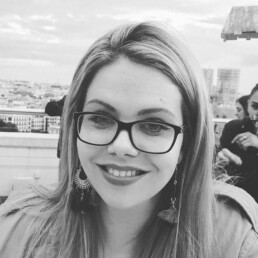
Written by Anna Szpakowska
Professional Development Lead at Lyfta
The importance of using a wide range of diverse human stories in our classrooms cannot be underestimated. There is clearly a desire amongst staff and students to broaden the curriculum to include these stories. Beyond that desire, however, there are numerous benefits to using diverse narratives in the classroom that include improving student engagement, nurturing character development and supporting academic progress too. In this blog, we’ll explore the importance of using diverse human stories, how this can be done and the potential impact it can have for your students.
Why diverse human stories?
It’s clear that the past few years have seen a heightened awareness and desire amongst the teaching profession to make the curriculum a more diverse and inclusive one. All teachers are bound by an adherence to the Equality Act of 2010 as well as the Public Sector Equality Duty, but recent polls have shown that there is still a desire to do more. For example, one survey commissioned by Pearson and conducted by Teacher Tapp revealed that 89% of secondary teachers and 60% of primary teachers felt that there was more diversity required in the set texts that they teach.
However, this clearly isn’t just an issue that concerns English teachers. Pearson’s own report, Diversity and inclusion in schools, reveals that teachers feel that their curricula are not fully representative of the communities in which they work. The results reveal that teachers feel most concerned by the under-representation of people of identify as non-binary and people identifying as LGBT+. The report goes on to list a variety of different reasons as to why this representation is important. These reasons include:
- creating a sense of belonging for staff and students alike
- reducing instances of bullying and mental health problems
- reducing barriers to achievement
So how do stories help us achieve this? Narratives have long been at the heart of teaching and learning and real-life stories have the potential to inspire students. For example, research conducted by Immordino Yang shows that experiencing human stories can motivate students into action and that the best learning takes place when students care about what it is they’re learning.
If stories have the potential to motivate students and to make them care, it’s clear that there’s a reason to embed them in our curricula. More than that, it’s clear by ensuring there are a wide range of diverse voices included, it has the potential to improve student wellbeing and progress too.
How can this be achieved?
Lyfta is an educational platform that allows students to travel the world without leaving the comfort of their classrooms. Teachers can teach lessons or set lessons for students to complete independently, that take them into Lyfta’s 360° storyworlds. Storyworlds are immersive environments that contain images, 360° videos, articles and short documentary films. These short documentary films connect students with individuals from the communities that they are visiting. All of Lyfta’s documentary films contain an inspiring central character who models resilience, problem solving and positive values, supporting students to think creatively and critically.
Lyfta has a wide range of lesson plans for teachers to use, to support them to successfully embed diverse narratives into their curriculum. These lesson plans are mapped against 12 different subject areas, cover a range of protected characteristics and all 17 of the United Nations Sustainable Development Goals.
We’ve seen great success of teachers using the platform with students from key stage one all the way up to key stage five. We know that students enjoy their lessons with Lyfta with 94% of Lyfta users indicating that their students are highly engaged or enjoy using Lyfta.
What impact will it have?
When assessing the impact of our work, we’ve seen that not only do students enjoy using the platform but that there are a number of other effects on their personal development and educational achievement too. Students at a sixth form college in Kent describe the experience of recognising the shared experience of humanity across the world, describing the moment they realised that the people in Lyfta’s documentary films were ‘thinking about the [same] things we do in our everyday lives’ and that preconceptions or ‘assumptions’ the students may have had beforehand ‘were undone’.
In addition to this work done at a secondary school in Essex revealed that Lyfta’s wide range of documentary films and storyworlds helped teachers to embed school values, with the vast majority of students finding that their understanding of their school values increased after completing a unit of work, using Lyfta lessons. In exploring values across the world, students are able to see our shared human values, thus normalising diversity and helping students to understand that we have more in common than our perceived differences.
These findings are also supported by independent research, conducted by the University of Tampere in Finland. This research revealed that ‘the multi-sensory and participatory nature of immersive 360° experiences led to a decrease in learners’ sense of social anxiety about meeting people from different cultural backgrounds. Engaging with new people in an immersive virtual setting gives students the opportunity to identify common interests and, as a result, develop more positive feelings towards them.’ Therefore, the way Lyfta helps to normalise diversity has two significant implications; first, it helps to reduce anxiety and prejudice amongst those students who feel worried about others who are different from themselves. Secondly, for those students who may have experienced discrimination or marginalisation, Lyfta’s storyworlds and documentary films also allow them an opportunity to see themselves reflected in the stories presented to them at school.
Special Interests
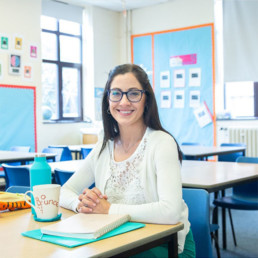
Written by Nadia Hewstone
Nadia is a certified executive school leadership coach. She left headship to start Destino Coaching and now supports school leaders with their own development as well as development of their teams.
Hunter is not Hunter’s real name – he chose it for this blog. It is taken from the Japanese anime series, Hunter X Hunter. The show features the protagonist Gon, on a mission to train himself as a hunter. He reunites with his father, who is alive and an accomplished hunter too. This is one of Hunter’s special interests. He doesn’t just like it, he lives it.
Hunter has been hooked on the Rubik’s cube for years. He spends hours working on improving his solves. His favourite events at cubing competitions are 3×3 blind and 4×4 blind. He talks about algorithms and memorization all the time. It makes no difference to him if you take part in the conversation (which I can’t because I don’t understand it). When he meets someone new he judges their usefulness to him based on how well they can solve a cube. I’m not that useful to him.
He has had many interests over the years. He wore a spiderman costume for over a year once. He taught himself how to play a Japanese flute, learnt how to graffiti and covered our garage. A particular favourite of mine was his interest in detectives. We sourced him a set of detective items from obscure dealers online and he made traps and spied on us for months. He studied Sherlock Holmes and took on many of his traits for a while. When we booked a villa in Mallorca one summer, he spent 10 days inside watching the series starring Benedict Cumberbatch over and over. By the time we flew home he had decided to take up the violin.
These interests envelop him and drive him – they have a mad urgency that is quite exciting but also tiring at times.
He understands now that being in a community of enthusiasts helps him. So we travel all around the country attending Rubik’s cube competitions. These events consist of 2 days of sitting in a hall of 200 hundred (mostly) boys clicking their cubes and discussing the merits of different brands of lubrication. It’s given him so much more joy than we could ever simulate at home. It’s also enabled him to talk about being autistic. In the evenings, in the bar of the hotel, he socialises and it brings me great joy.
Penny is my daughter – the name is taken from Big Bang Theory, her favourite TV show. She watches it on a loop. It’s a comedy but she never laughs at it. She has glasses the same as Penny’s and uses phrases from the series all the time. She wants to be a brain surgeon and study sciences like many of the characters in the series.
Penny’s interests aren’t as clear as Hunter’s. Apparently this is common in girls with autism. She does have things she likes, really likes but doesn’t have hobbies in the same way Hunter does. She worries about her friendships (which are hard work for her). She does like series / TV shows so we have moved through lots of them and on days when she is very low she watches all 8 Harry Potter movies without sleeping. She is very capable and could achieve almost anything. When she takes up a hobby she excels very quickly (football. piano, singing, drama, swimming) but loses interest just a fast. This means her interests don’t show in the same way as Hunter’s do. She does like to talk and talk and talk about the social politics of school, the family, my work etc.
Penny sometimes talks at me all evening and doesn’t let me move. Her favourite criticism of me is ‘I don’t feel like you’re completely present Mum’. What is impressive about her is that when she sets her mind to something she achieves excellent results. If she ever does a manicure for me, for example, it far exceeds the quality of a salon experience. She’s meticulous, a perfectionist, in fact. This is probably why she gives up on things – she sets such high standards for herself that it tires her out.
How East Stanley Primary School used Rainbow Laces to build a more inclusive environment for its pupils
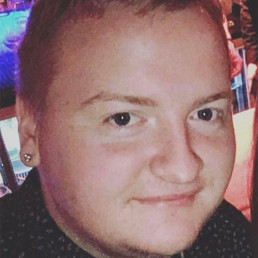
Written by Adam Walker
Adam is a Primary Teacher at East Stanley Primary School in Durham and is a member and advocate of the LGBTQ+ community.
‘The number one thing is the inclusivity benefits of the resources. Not having pupils question who is playing football and building a much deeper level of respect for each other.’
Creating an inclusive environment for pupils is a top priority for many teachers and their schools. As we celebrate LGBTQ+ History Month, Adam Walker, a teacher from East Stanley Primary school tells us about how using the Rainbow Laces resources, from Premier League Primary Stars, helped create a more inclusive environment for his pupils – increasing their understanding of gender stereotypes and the LGBTQ+ community.
“We had an incident at a football match a few years ago where a pupil from our school called a player from another team a homophobic slur. It was at this point we realised that we needed a solution that we could use to support our pupils in understanding the importance of being inclusive. After a long search to find the right solution, we came across the Rainbow Laces resources from Premier League Primary Stars. A bank of free resources that could educate our pupils around the importance of inclusivity, challenging stereotypes and being a good ally – it was exactly what we were looking for.
At East Stanley we are seeing more girls wanting to get involved in sport. So it was great to see Premier League Primary Stars use male and female professionals in their resources to show balanced representation of real sport. Activities such as ‘Do it like a…’ and ‘Be an ally’ have been popular with the pupils. It has especially given the girls something to look up to and through challenging stereotypes we have mixed teams playing football with a deep level of respect for each other.”
East Stanley has used the Rainbow Laces resources in PSHE lessons at the school to create a more open environment: “The Rainbow Laces resource pack helped us in our PSHE lessons when talking about what it means to be a part of the LGBTQ+ community or discussing gender stereotypes. Now all the pupils are aware of different types of representation; they know that it doesn’t matter if you are homosexual or heterosexual, a boy or a girl, your ethnic descent, or what your first language may be.”
As a member of the LGBTQ+ community, Adam appreciates the difference that resources like Rainbow Laces make: “Now that I have these resources I reflect and think that if material like this had been available when I was in school, it would have helped me to identify and feel more comfortable as a result of inclusive topics being spoken about openly. The more we use material like this in primary schools, the more we will create a better environment for everybody to live freely. It is only going to have a positive influence.”
Speaking about whether he would recommend the resources to fellow teachers, Adam said: “I would 100% recommend them. Knowing how the PSHE curriculum works, Rainbow Laces has been great for us. For other teachers who are looking to increase inclusivity at their school, we have loved the outcomes the resources have given us. Premier League Primary Stars has a wide variety of resources too and there is also the opportunity to build Rainbow Laces – and others resources – into additional lessons around Maths, English and PE. We have seen a real difference and our pupils are happier as a result.”
At the end of 2021 and during the Premier League’s Rainbow Laces campaign, Premier League Primary Stars launched a new resource pack called ‘Rainbow Laces – This is everyone’s game’. The pack, perfect to build into PSHE lessons this LGTBTQ History Month, includes an educational film, and supporting resources, celebrating LGBTQ+ football fans and showcases the power of football to bring people together. The film tells the story of a young Sheffield United fan and member of the LGBTQ+ community, who talks about what football means to her and how it has played a part in helping her to feel proud of who she is.
Premier League Primary Stars has a wealth of dedicated LGBTQ+ and Anti-Discrimination resources – all free – for teacher to use in the classroom linked to English, Maths, PE and PSHE here.
About Premier League Primary Stars
Premier League Primary Stars is a national primary school programme that uses the appeal of the Premier League and professional football clubs to inspire children to learn, be active and develop important life skills. Clubs provide in-school support to teachers, delivering educational sessions to schools in their communities. Free teaching materials ensure the rounded programme, which covers everything from PE and maths to resilience and teamwork, is available to every primary school in England and Wales.
The Premier League currently funds 105 Premier League, English Football League and National League clubs in England and Wales to provide in-school support for teachers.
For more information about Premier League Primary Stars or to register, visit: www.plprimarystars.com
You can also contact Ben Lewis-D’Anna on blewisdanna@everfi.com or 07590465455.
Whose Potential is it Anyway?
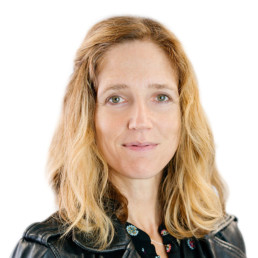
Written by Ellie Garraway
Chief Executive of Grit Breakthrough Programmes, a youth charity that delivers personal development and coaching programmes in schools, colleges and universities across the UK.
The odds are that, when you look at the website or mission statement of a youth charity, school, college or university, or when you come across articles, blogs and posts about young people and education, you’ll see the word potential. For those of us who work with young people it is vital that we ‘support young people to fulfil their potential’ and yet it’s a word that has become so much of a cliché we’ve forgotten what it really means.
I like this early definition of it: ‘That which is possible, anything that may be’. And at Grit we see that come alive in the course room. The young people recognise that their belief that ‘I’m a nobody’ (for example) is not, actually, a fact. They come to see there are so many more empowering ways of interpreting themselves and their lives. It is a lightbulb moment that can transform young people’s futures and is a privilege to witness.
The Latin root is: potencia ‘power, might, force’. When we become liberated from the limitations of the past and understand the power we have within ourselves, we can make things happen in our lives that previously we believed were beyond our control. “Before Grit I never felt able to challenge a professional on how they were reacting to an incident or dispute, or how they were being with a particular student. It was almost as if I was letting them dictate how I did my job. Now I’m able to hold them to account.”
THIS is what gets me out of bed in the mornings.
But recently it has occurred to me that there is a darker, oppressive, almost tyrannical side to potential.
Over the last two years in particular most of us have been comparing our life under Covid with what our ‘best life’ is supposed to look like. But it’s not just the pandemic. The culture of self-improvement can create the assumption that no matter what life throws at you, you can still choose to be ‘happy.’ These expectations can leave us feeling that the imperative to ‘fulfil our potential’ is a pretty large stick to beat ourselves with.
This is certainly what our young people are telling us. It’s bad enough that they’ve had to experience the anxiety, trauma, disruption of living through the pandemic. But they are also having to live with the narrative of ‘catch up’: the ‘wasted years,’ ‘the cohort with fake grades,’ ‘the ones who’ve fallen behind.’ In some ways this narrative is as damaging (if not more) than the experience itself. When we think about potential as another way of talking about the gap between our current reality and the way we think it should look, it can be paralysing.
In his book ‘Groundedness’ Brad Stulberg talks about the notion of ‘heroic individualism’. This is the idea that only by giving everything to our work, our sport, our latest endeavour, our every waking moment and leaving ourselves empty, can we truly know that we’ve reached our potential.
But actually, this can create a really unhealthy approach to life, one where we constantly need to feel that the level of challenge is as high as possible. Here, ‘Fulfilling potential’ is not about being slow, thoughtful, restful, still, ordinary – quite the opposite. It becomes accepting this as a generic cultural norm about what potential looks like and judging ourselves against it: ‘I should get A grades’, ‘have a huge list of enriching activities on my CV’, ‘get a graduate-level job’ (whatever that means). Only if I appear impressive to others can I truly believe that I’ve really nailed this potential thing.
But what happened to allowing our own life to unfold before us like the unravelling of a great mystery? What happens when the way we measure ourselves is based on what feels right and true, rather than what will most impress others? Isn’t this what potential is all about?
So, while so many of us in the charity sector are driven by our passion for giving young people the opportunity to fulfil their potential – perhaps it’s time to really challenge whose notion of potential we have bought into – for young people and for ourselves.
Potential may well be ‘power, might and force’ but like any form of power it’s how you use it that counts. Let’s give that power to young people so they can reclaim their potential, decide what it means for them. After all, whose potential is it anyway?

